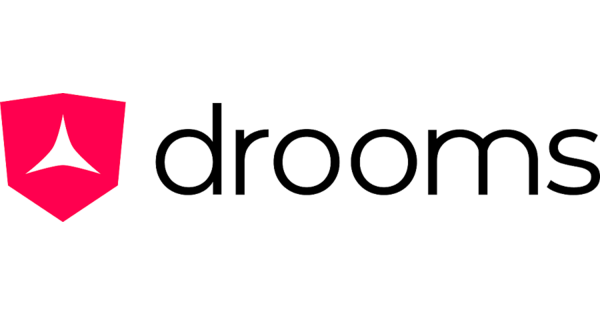Large language models have moved from technical curiosity to governance talking point. UK boards are now asking a practical question: how can LLMs help with real board work without undermining accountability or control?
The answer is emerging in stages. Directors are not turning the boardroom into a lab. They are building a simple playbook for safe, targeted use of LLMs across the meeting cycle, usually inside secure digital platforms such as board-rooms.
At the same time, the revised UK Corporate Governance Code reinforces the board’s responsibility for effective internal controls and transparent reporting. (Financial Reporting Council) Any sensible LLM playbook must support those expectations, not dilute them.
Below is a structured view of how UK boards can weave LLMs into preparation, discussion, and follow up.
Before the meeting: using LLMs for smarter preparation
The biggest opportunity sits in the pre-meeting phase. Directors face long packs and limited time. LLMs can help convert volume into insight.
1. Summarising board and committee papers
Within a secure board portal, governance teams can use LLMs to generate:
-
Short overviews for each paper
-
Bullet point summaries of key risks and decisions
-
Comparisons with the previous quarter on recurring topics
Directors still read the underlying documents, especially on material items, but they do so with a clearer sense of where to focus.
2. Mapping issues across the pack
LLMs are good at spotting patterns across multiple documents. For example:
-
Links between cyber incidents, operational resilience and audit findings
-
Connections between strategy papers, capital plans and ESG disclosures
This helps directors see the pack as a single story rather than a stack of separate files.
3. Drafting questions and challenge points
Many directors now use LLMs as a thinking partner when preparing challenge. Typical prompts include:
-
“What would you ask management about this restructuring plan”
-
“Which assumptions in this forecast look most exposed to macro risk”
The board then refines or discards these suggestions. The model provides perspective, not direction.
In the meeting: supporting clarity, not decision-making
Live use of LLMs during meetings is still experimental, but some patterns are emerging.
4. Real time clarification of technical material
During complex items, such as regulatory changes or new risk models, a committee chair or company secretary can use an LLM privately to:
-
Rephrase technical terms in simpler language
-
Summarise a dense annex in a few sentences
-
Check that they have captured the core point correctly
This helps maintain the flow of discussion, especially when not every director has a technical background.
5. Keeping track of themes and actions
LLMs can assist with note capture, provided this happens inside a secure environment. They can:
-
Extract draft action points from spoken or written notes
-
Group comments by theme, for example culture, risk, stakeholder impact
-
Suggest a first structure for the minutes
The company secretary remains fully responsible for the official record. AI output is a rough draft that saves time, not a final document.
After the meeting: turning decisions into follow-through
The most overlooked part of the board cycle is follow-up. LLMs can also help there.
6. Drafting and refining minutes
LLMs are well suited to moving from structured notes to draft text. They can:
-
Turn bullet lists of decisions into full sentences
-
Align wording with an agreed style guide
-
Check consistency of terminology across multiple meetings
The secretary then reviews, edits, and validates every line before circulation.
7. Tracking actions across the year
Over time, LLMs can help boards monitor whether agreed actions have actually been completed. For example, they can:
-
Scan packs and minutes for references to past commitments
-
Flag items that have reappeared without closure
-
Produce a simple action tracker for the chair or senior independent director
This supports a key theme in UK governance guidance, which is the need for boards to move beyond box-ticking and maintain a clear line of sight on execution.
8. Supporting evaluation and reflection
At year end, LLMs can help with board effectiveness reviews by:
-
Summarising recurring themes from minutes and committee reports
-
Highlighting how often certain topics, such as culture or stakeholder engagement, reached the agenda
-
Providing raw material for the narrative sections of an internal review
Formal evaluation remains a human process, but preparation becomes less laborious.
Guardrails that belong in every UK board LLM playbook
Any playbook that focuses only on use cases and ignores guardrails is incomplete. UK boards that are moving fastest tend to share five disciplines.
-
Use private, enterprise-grade environments
Board material never goes into public chatbots. LLMs are accessed through secure portals or trusted vendors under clear contractual safeguards. -
Keep humans firmly in charge
AI never “decides”. Directors and company secretaries review and own every output, especially where risk, control or disclosure is involved. -
Respect data protection and confidentiality
Use is aligned with UK GDPR and sector rules. Access is logged, role based and actively monitored. -
Document boundaries and purpose
Boards approve written policies that define how LLMs may be used, which tasks are out of scope, and who is accountable for oversight. -
Invest in director education
Short teach-ins help directors understand what generative AI can do, where it fails, and why it occasionally “hallucinates”. Articles such as McKinsey’s “What every CEO should know about generative AI” provide useful context for board-level conversations. (McKinsey & Company)
Building your own LLM playbook as a UK board
Every organisation will design its own approach, but a practical starting sequence looks like this:
-
Begin with low risk, high value tasks, such as summarising non-sensitive papers.
-
Run pilots inside an existing secure platform rather than standalone tools.
-
Ask the board and committees what actually helped and what did not.
-
Refine policies and controls before expanding into new areas.
-
Treat the playbook as a living document that evolves with the technology and with UK regulatory expectations.
Generative AI will not make hard decisions easy. It can, however, give UK directors more time and better raw material for judgement. Boards that treat LLMs as disciplined tools, rather than shortcuts or threats, will be in a stronger position to navigate the next phase of UK governance.








